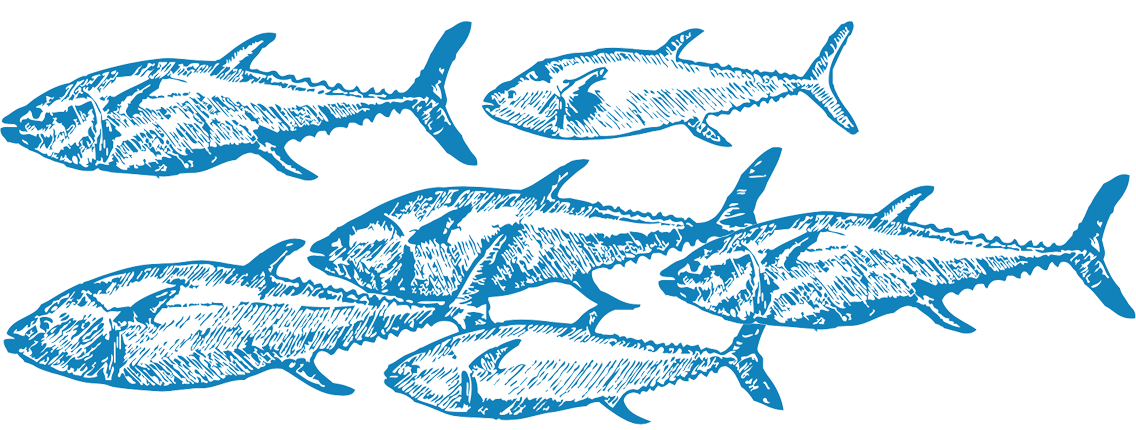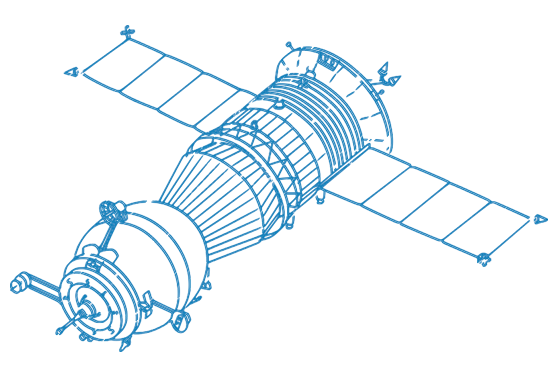Transparency and Traceability from Sea to Shore: Ending Overfishing
The Problem
Overfishing remains the largest direct threat to marine ecosystems. With 80% of all global fisheries at or beyond full exploitation, managing the massive quantity of fishing—including illegal as well as legal overfishing—remains an immediate challenge. Current fishing fleets are estimated to be 250% larger than what is sustainable, and this system is plagued with insufficient resources to effectively stem the tide. Moreover, the supply chain for seafood products involves a complex web of middlemen that mask the origins of fish, making enforcement of sustainability standards difficult. Challenges for overfishing include monitoring fishing activity at the source, creating more efficient tracking and enforcement mechanisms, increasing barriers to entry for unsustainable fish products into global markets, and influencing demand structures associated with seafood products.

The Challenge
Transform the monitoring and enforcement of fisheries management through innovations and systems that prevent overfishing, ensure true end-to-end traceability, and produce actionable data on the health and quality of fisheries for communities to act more sustainably. The challenge seeks innovations in four areas:
- Suitable technologies and innovations that would allow for better measurement & management of small-scale, artisanal fishing, and inshore fleets for sustainability of both communities and ecosystems, including ways to empower these groups as enforcers of fishing regulations and accelerate better data collection
- Technologies that improve the monitoring and management of industrial fishing
- Innovations for 100% end-to-end traceability, reducing mislabeling, and enhancing monitoring of seafood products from sea to store. Traceability tied to novel financial mechanisms that incentivize fishers to behave sustainably by connecting well-regulated markets to the fishers themselves
- Traceability tied to novel financial mechanisms that incentivize fishers to behave sustainably by connecting well-regulated markets to the fishers themselves
Problem Statement
An estimated 80% of global fish stocks are fully exploited or overexploited.
Fisheries have provided increasingly lower yields over the past few decades. Some industrial fishing fleets have begun to deplete stocks of fish species not previously consumed in an effort to keep up with the demand for seafood, or use trawling practices that are devastating to marine ecosystems. Though overfishing is generally driven by unsustainable practices even when not explicitly banned, Illegal or unregulated fishing can drive overfishing even when local communities are attempting to manage their fish stocks. Coupled with the fact that territories and barriers in the oceans are often muddled in political controversy or are difficult to delineate physically, there can be no enforcement of protected areas without serious investments of financial and human resources.
There can be no enforcement of protected areas without serious investments of financial and human resources

Once the seafood products enter the global market at packaging and processing plants, tracking the source becomes more complicated for management officials, wholesalers, retailers, and consumers. The seafood supply chain is comprised of a worldwide network of hundreds of thousands of producers (fishers and fish farmers), thousands of processors, and tens of thousands of wholesalers and brokers that buy and sell over 800 commercially important species of fish, crustaceans, and mollusks. A single fish may circle the globe and be touched by 20 different entities before making its way to the consumer. However, key identifying information—the species name, where and when it was caught and with what type of gear, and where it was processed—rarely accompanies a fish on its journey from the ocean to the plate.
Although illegal behavior may grab headlines, in many of the most critical habitats, there are few laws to enforce. Unreported and unregulated behavior has at least as large an impact on fish stocks as does overtly illegal activity. Developing countries account for 50% of the seafood entering international trade, yet represent only 7% of the Marine Stewardship Council certified fisheries. Progress toward ensuring sustainable management and end-to-end traceability requires finding new solutions for fisheries in developing countries that are designed for local constraints of cost, environment, suitability, and education levels. In addition to these tools, it is critical to help build local governance and management capabilities.
Further, local demand is often overlooked as a driver of overfishing trends. Fisheries in the developing world are critical to local nutritional needs. Seafood contributes at least 15% of the average animal protein consumption for 2.9 billion people and as much as 50% for some small island and West African states. For many of those who live in poverty (under $1.25 per day), seafood is a major source of omega-3 fatty acids that are essential for brain development and provides important micronutrients. The services of well-managed fisheries sustain coastal communities that rely on subsistence fishing for food. Unfortunately, these developing world fisheries are often some of the most threatened. They are also places where innovations specifically designed for the constraints faced by these communities could help mitigate overfishing.
Overfishing as a phenomenon of human behavior has broad implications. The ocean as a whole is difficult to manage and protect as territorial lines are often disputed and surveillance of key fishing areas is minimal at best, facilitating the myriad unsustainable behaviors that result in overfishing. Fishing is an economic driver as much as a source of food with over 2.1 million estimated motorized fishing vessels, 90% of which are small vessels less than 12 meters long. Because fish stocks are often hard to quantify and visualize and fishermen struggle to maintain economic security, the tragedy of the commons is a frequent occurrence where fish stocks are depleted rapidly in the pursuit of individual yields.
Respond to this Challenge!
Going from an idea to a tangible solution is no easy task.
Share your project on the Digital Makerspace to shape and improve your idea. You’ll benefit from the technical expertise of the Tribe and connect to additional financial and technical resources. We’ll help you navigate the tech development process and identify market opportunities. Through collaboration, we build conservation solutions that are impactful and have the potential to scale.
PART OF
Ten Grand Challenges for Ocean ConservationPROJECTS
Seacology Deter, Detect+Detain
Our buoys tell fishers they are being watched, then catch them if they fish illegally in MPA or EEZ.
Fishery Platform for Fishers
Marine GPS Navigation System with regulation such as Marine Protected Areas, No-Take Zones . Provides transparency and traceability for Seafood.
CHALLENGE LEADER
SPONSORS & ORGANIZERS
